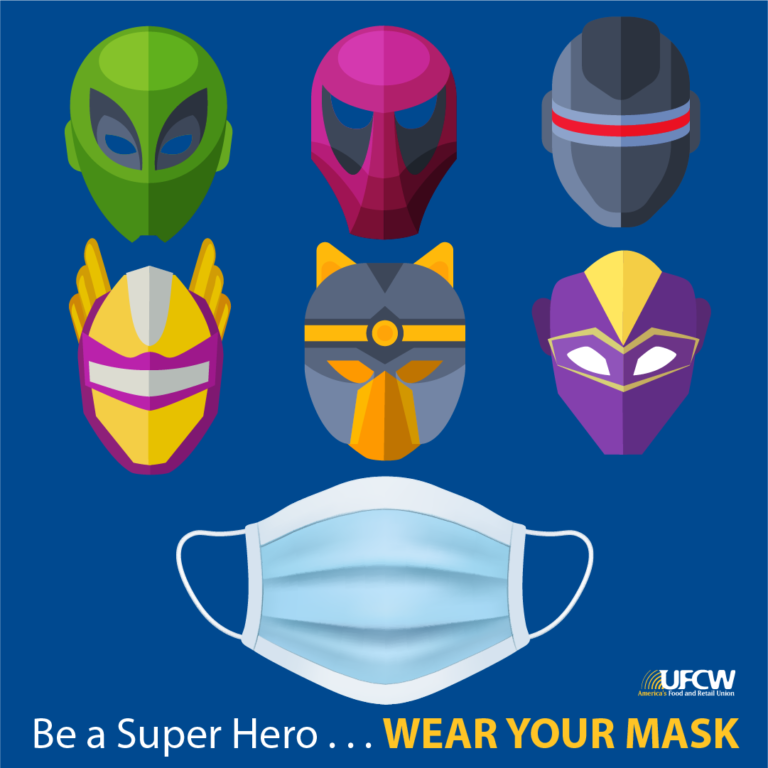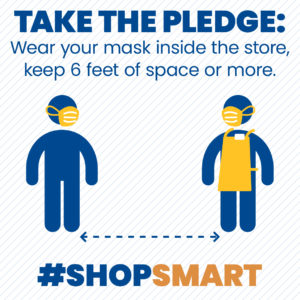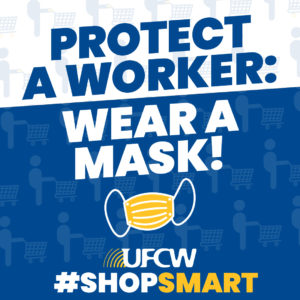
Masks, both medical-grade and home-made, can be a powerful tool for protecting yourself and those around you during COVID-19, but the truth is masks only work if we ALL wear them. That’s why the UFCW is calling on employers to provide masks to workers that comply with CDC guidelines and asking all customers to not shop without one.
When people talk, laugh, cough, sneeze, or even just breath, tiny droplets of water are released into the air, which can carry the virus. If you cough or sneeze into a homemade cloth mask, the fabric is going to capture at least some of the virus-carrying droplets before they become airborne.
That’s why it is especially important to wear them in places like the grocery store or the pharmacy where hundreds or thousands of people are passing through each day. When you have that many people in one place, even an imperfect solution is going to help dramatically reduce the number of germs circulating and reduce the chances of someone getting sick. Because masks do not always prevent you from breathing in the virus, it is critical to emphasize that maintaining 6-feet social distancing remains important to slowing the spread.
What are the best materials to use when making a mask?
The tighter the weave on fabric, the more it restricts the flow of air, which is good for blocking droplets, but can make it more difficult to breath. According to a study by Cambridge University researchers, several suitable fabrics can be used to make face masks at home.
If you are using materials you have around the house, cotton (from either an old t-shirt or a bandana), is a good choice but requires layering – preferably 2-4 times. If you have other materials such as quilter’s fabric, flannel, or bedsheets with a high thread count, these materials are even more effective at blocking particles.
When layering your materials, you want to make sure the mask is still breathable while providing good filtration. When testing your mask, you’ll want to make sure you can breathe comfortably through your nose – through the material and not just in and out the sides.
To make sure the fabric isn’t too porous, the Wake Forest research team suggests holding the layered fabric up to a light to see how much shines through. If you can see a bright light clearly, you’ll need to choose a different fabric.
Creating Your Mask
The CDC has posted multiple patterns for creating your own mask at home. Don’t know how to sew? Don’t worry! They’ve got you covered too. No mask pattern has been proven more effective than the other – as long as you make sure it covers your nose, is secure on either side of your face, and fits under your chin.
Removing Your Face Mask
Be careful not to touch your eyes, nose, and mouth when removing your mask. Be sure to wash hands immediately after removing – as well as before you put it on.
Washing Your Face Mask
Face masks should be washed regularly and after each use. Just your standard washing machine and detergent should suffice in properly washing your new creation. If that is not accessible, hot water and soap work just fine as well!





